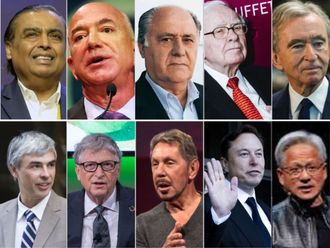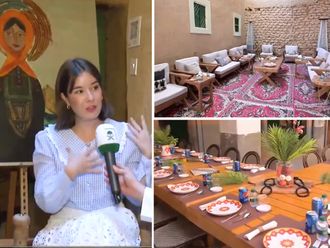
Once deemed an indulgence by the average tenant, luxurious amenities, high-end residential communities, club houses and landscaping are all now de rigueur in residential developments. Viewed as ‘trimmings’ or value additions, these elements are now closely monitored and introduced by developers and realtors to boost the value of new and existing properties.
“Well-managed and maintained properties certainly drive a premium in the market,” says Niall McLoughlin, Senior Vice-President, Damac Properties. “Facilities management, through security, repairs, improvements, cleaning and landscaping ensures the property is maintained through the service fee. Additions such as swimming pools, tennis courts, and beautiful gardens add to the ambience and high-end finish helping the development to grow in value.”
Following the abrupt end to the UAE’s property boom in 2008, hundreds of new developments were cancelled or stalled forcing developers and managers to revisit their existing projects and refocus their efforts. “Developers are increasingly becoming more aware of [trimmings], particularly since the downturn, when an oversupply put pressure on them to offer property of a higher calibre both in terms of quality and facilities,” says Steve Flanagan, Director of Professional Services, Knight Frank, a leading property consultancy. “This trend is more important now than ever as there is an oversupply of residential apartments, when this occurs there is a flight to quality — towers with better facilities and with better management will appeal more to tenants and occupiers,” adds Flanagan who says this in turn helps maintain better value compared to “fringe properties which were built quickly and to a poor standard.”
Concierge services
Swimming pools and gymnasiums are considered necessary across the UAE today, but trimmings can range from luxury (bespoke concierge services, private helipads and personal elevators) to the more prosaic (club houses, parks, round-the-clock security, pest control, window cleaning and maintenance). “It all boils down to individual taste,” says Linda Mahoney, Chairman of real estate agency Better Homes. “For some, trimmings mean having their place of work or their children’s school nearby, for others it’s knowing that their maintenance is taken care of. A pool, good landscaping, a concierge or water features very well qualify — people will look around until they find what they like and it’s never just one thing.”
Tenants say attention to the nitty gritties convinces them to renew their contracts and even consider a purchase in the long term. “I’ve lived in Meadows for a few years now, and I appreciate the community and the way it has grown,” says Indian HR professional Ramesh Sivaraman, 45, who’s actively looking to purchase a villa as a family home. “The community centre, pools and public areas are major components for us, so our choices will definitely factor this into our final decision.”
Leading developers agree trimmings have helped the turnaround. “These investments have not only improved the well-being of our residents, but they have also allowed us to increase rents,” says Khalid Al Malik, Group CEO, Dubai Properties Group (DPG) who prescribes taking a long term view on maintaining the value of DPG communities. “It has led to high occupancy rates across our portfolio, which is why we created our subsidiary Ejdah. It provides both property and facilities management services, which are essential to maximising property potential and optimising ROI for the developer and residents within our communities.”
So far DPG has achieved close to 100 per cent occupancy across its residential communities such as Layan, Ghuroob and Shorooq in Mirdif, Al Khail Gate and their flagship staff accommodation Nuzul.
“I’ve lived here for two years now and the change to the property has been impressive,” says 33-year-old Indian entrepreneur Jim Thomas, a resident at Ghuroob, in Mirdif. He moved in when Ghuroob’s apartments remained mostly empty with a handful of tenants. When a landscape and facilities upgrade led to an influx of residents, Thomas too renewed his contract. “The landscaping has changed the whole look and feel of the place, the sporting facilities, walking tracks and fountains now attract more families and we even have Empost post boxes, which most of us have wanted for a while now.” The formula seems to have worked well for DPG, who are taking their community engagement to the next level by organising initiatives such as a tree planting day and cultural events in Ramadan.
Right now maintenance standards rank high on customers’ list of demands. “Whether it’s cleaning of the communal pool, servicing and repair of lifts or regular condition inspections, health and safety and security are factors that weigh heavy with families. The next big question an occupier would have is what are the facilities within the building or project,” says McLoughlin.
And community facilities are equally important. “Many developers are partnering with school operators or health clubs to incorporate these facilities into master planned schemes,” he says.
Pretty pays
Proof is in the prettying up. For Damac Properties’ Jumeirah Village, owners have experienced a Dh10,000 a year increase in rent on a one-bedroom apartment compared to a competitor one-bed next door. “We’ve seen that by offering outstanding finish and facilities adds significantly to the value of the property, we’re even utilising the roof space on our buildings to provide rooftop gardens which provides added value to our residents,” says McLoughlin.
“Most projects in the UAE go through the same cycle of development,” adds Flanagan. “A recent example is the The Villa project on Emirates Road, which is continually improving in terms of landscaping and infrastructure — there will be a shopping centre, gardens, sports facilities upcoming, and prices, which have already risen by 20 per cent last year, continue to strengthen.”
Flanagan cites The Greens as another project that has shown resilience in the rental market due to the close proximity of excellent neighbourhood facilities, health centres and schools. “It would be fair to point to many of Emaar’s developments, which incorporate good community facilities and proper facilities management functions and see how values have either improved or fallen less than poorer competing schemes.”
But is there a flipside to investing in value additions? “When it comes to non-freehold properties where the landlord is in charge of the whole building, yes,” says Mahoney. “Could paying more attention to the details boost the value of the property? “I’d say yes. But owners are no really interested in spending the money. Not many would put in more than 500,000, it would take them anywhere between three to four years to get the investment back. However, they could be looking at getting 5 to 7 per cent more, but in increments.”













